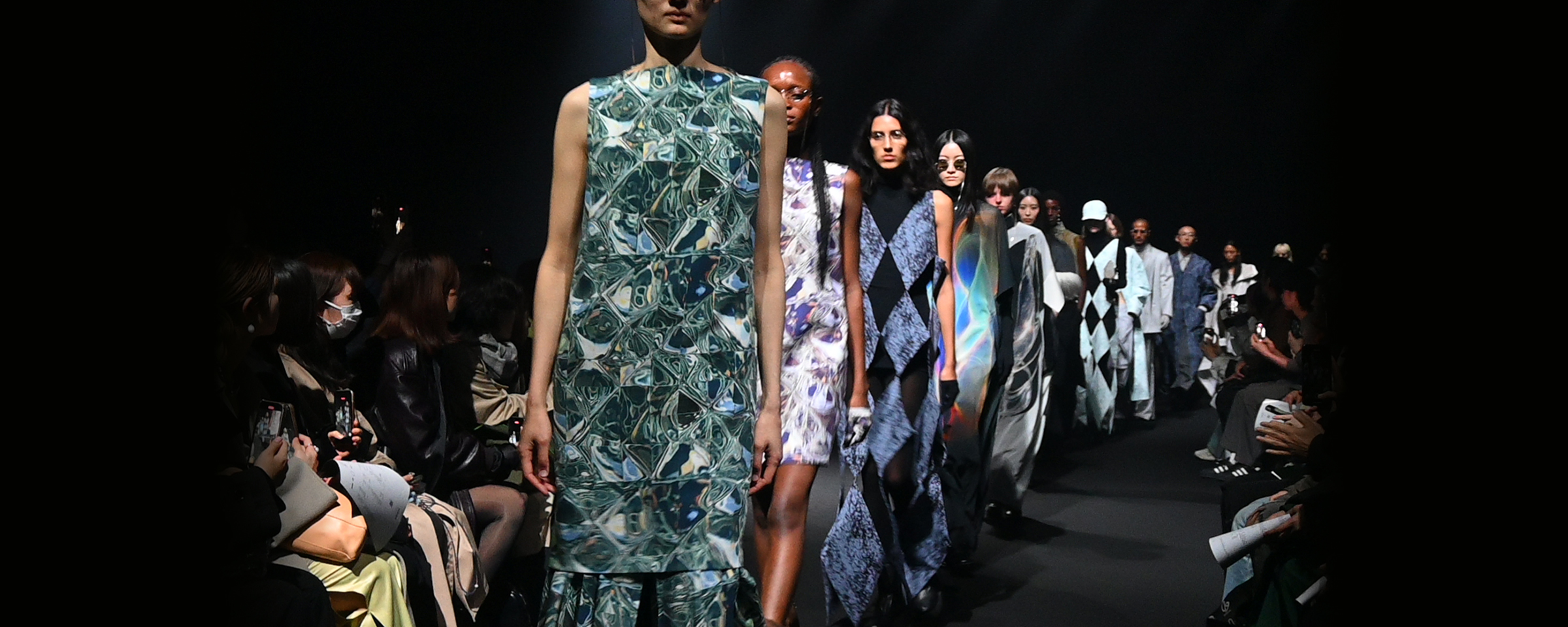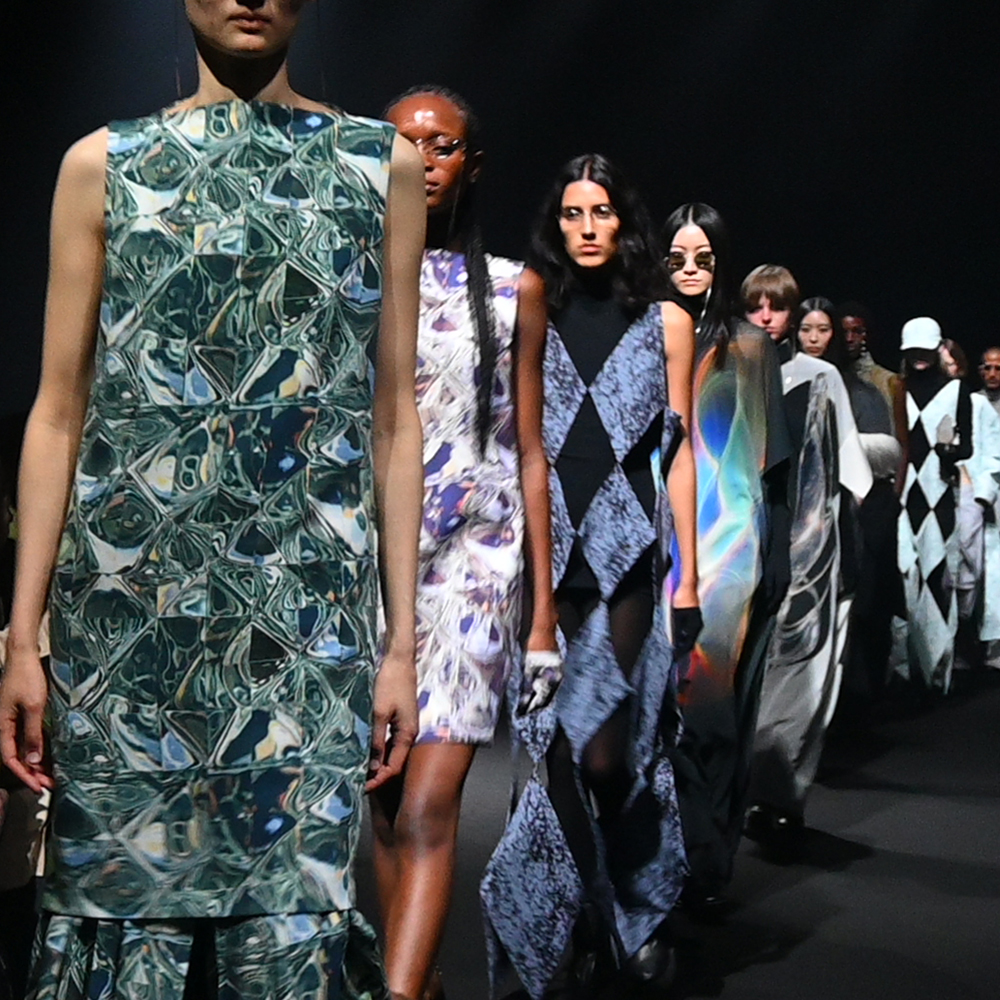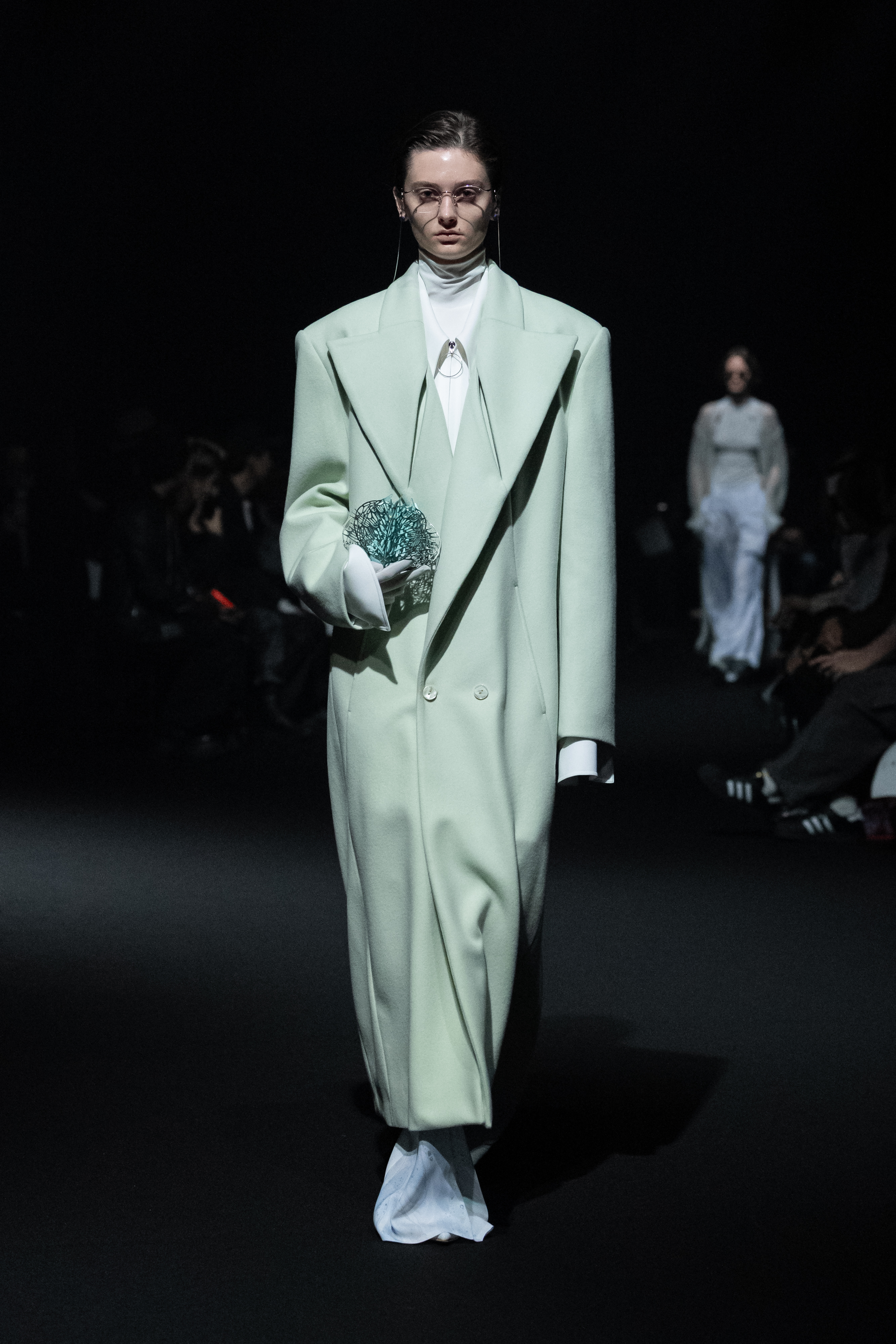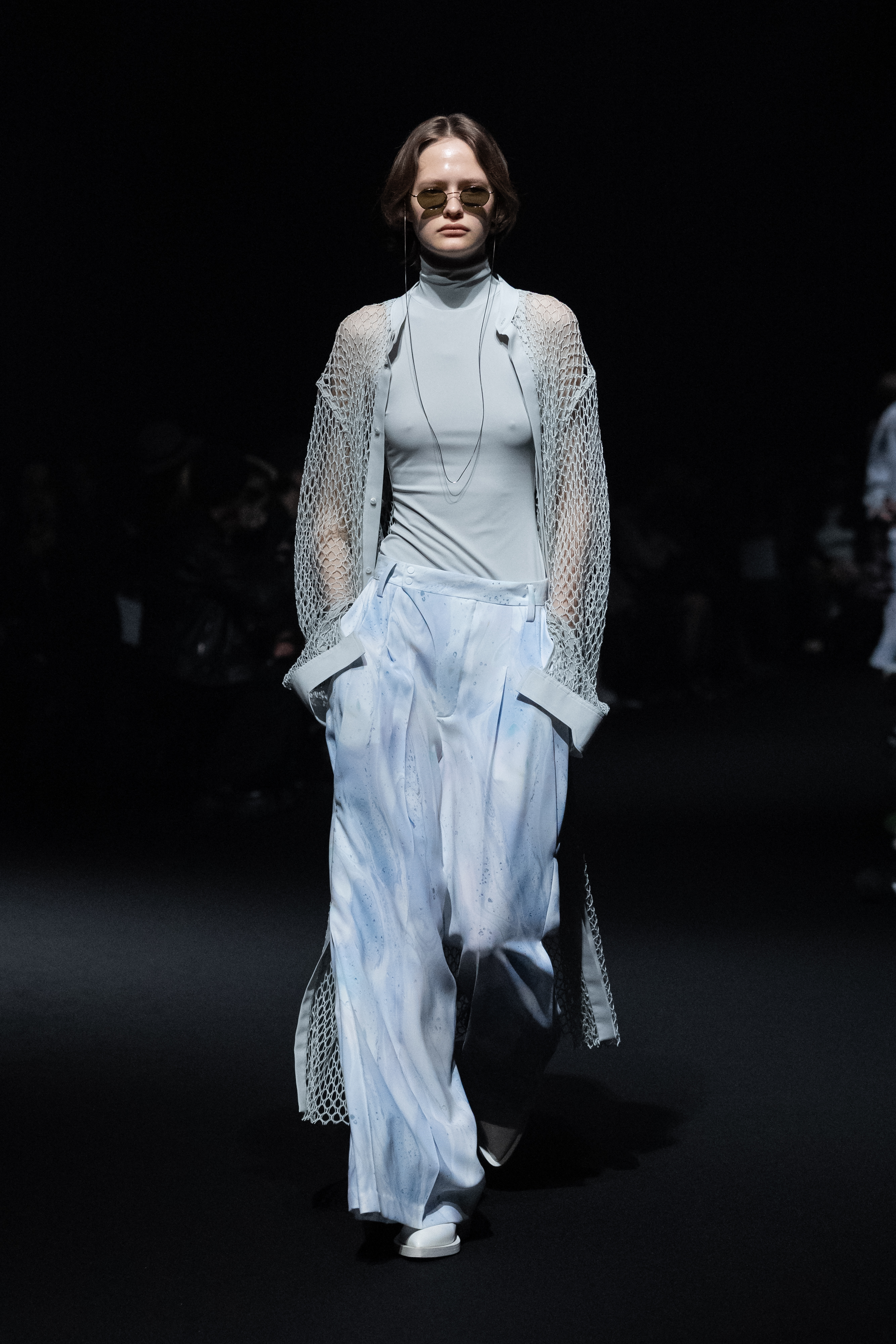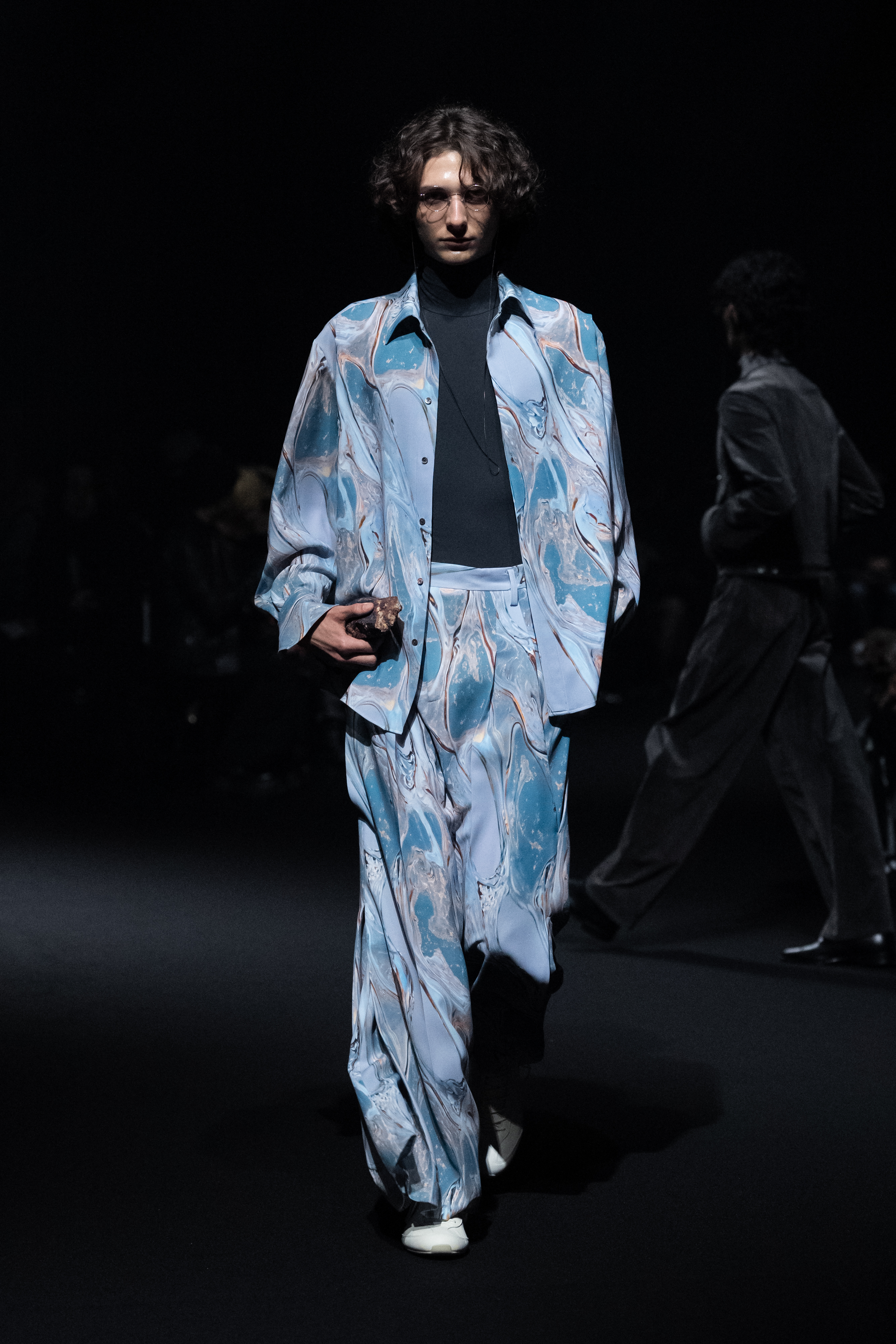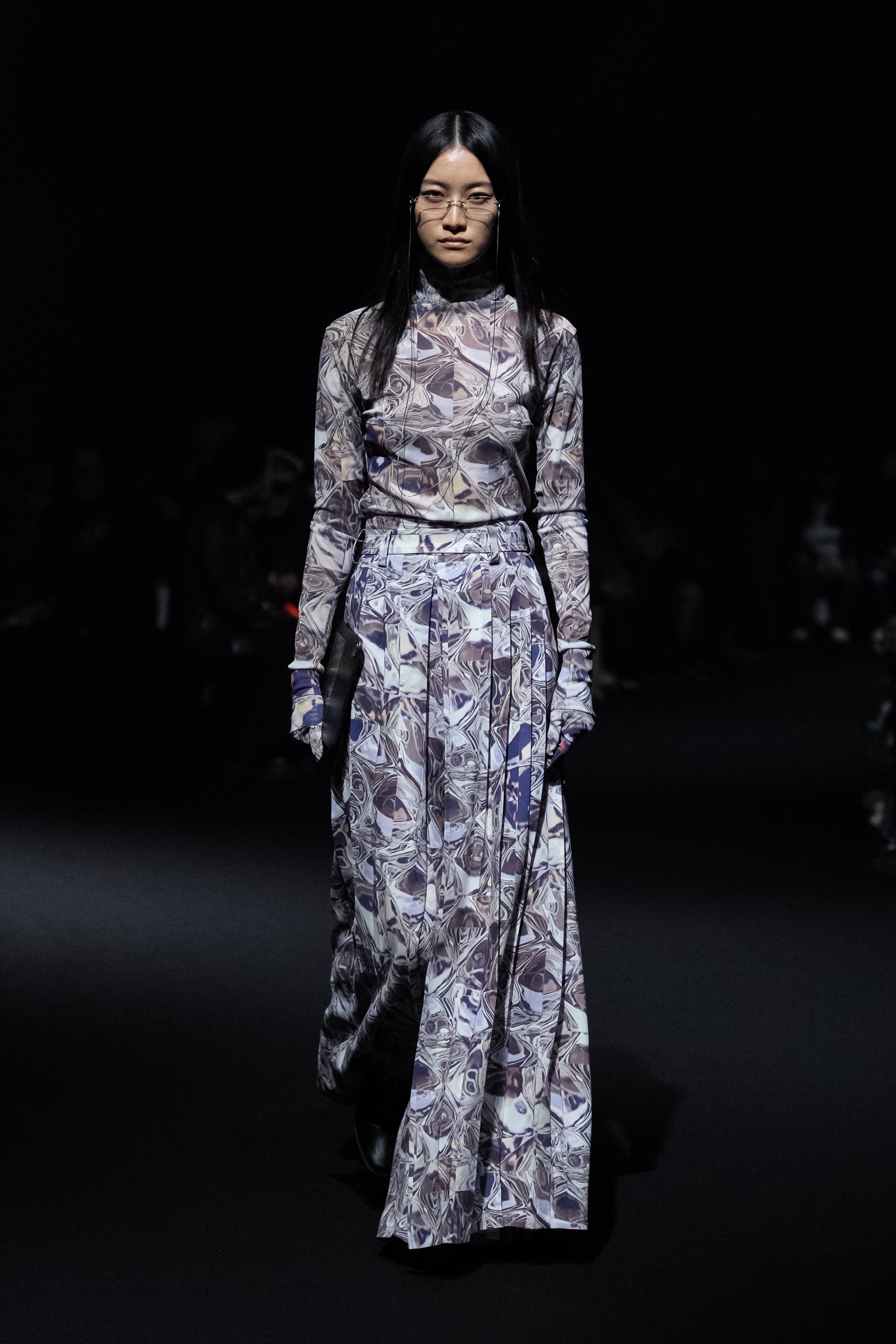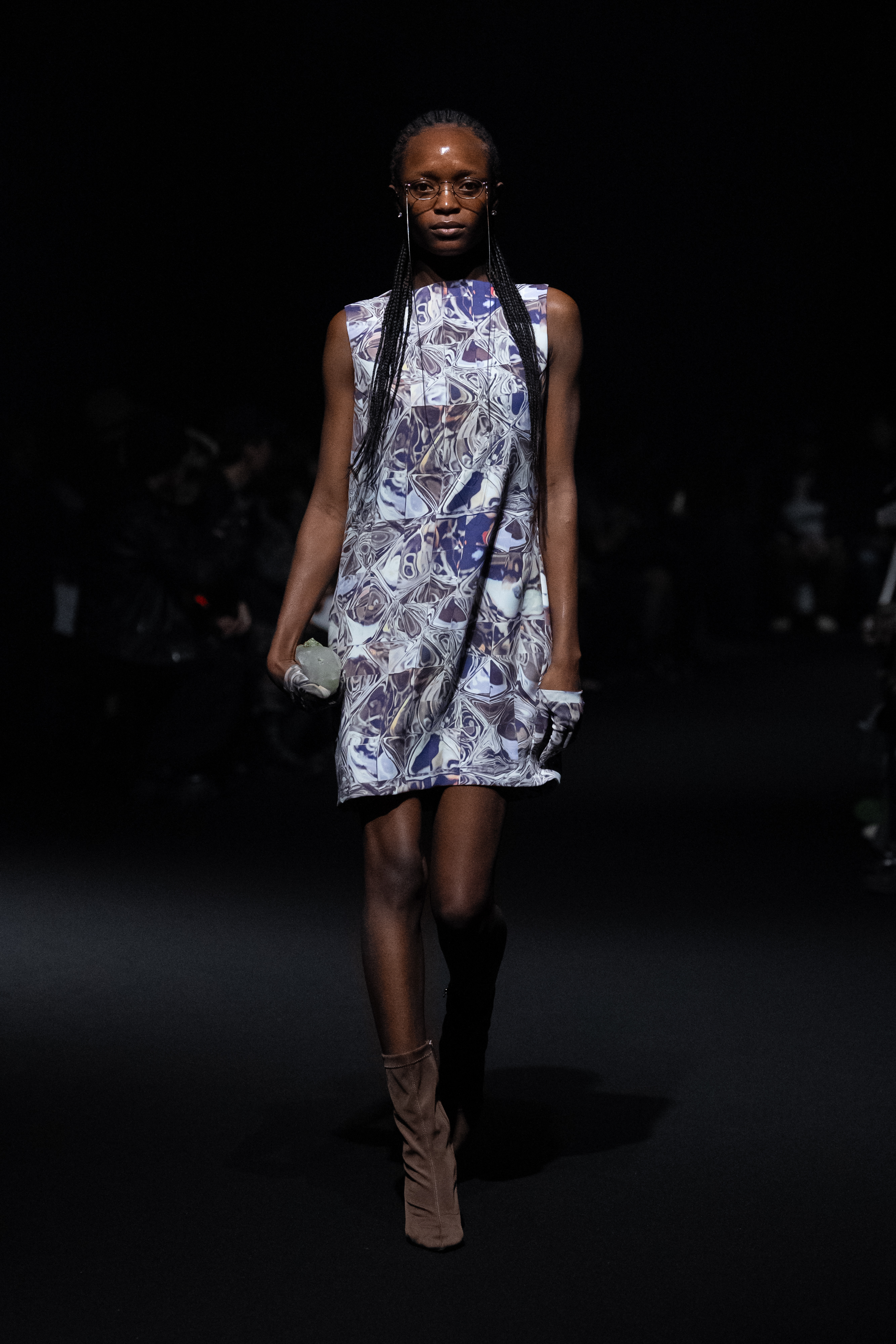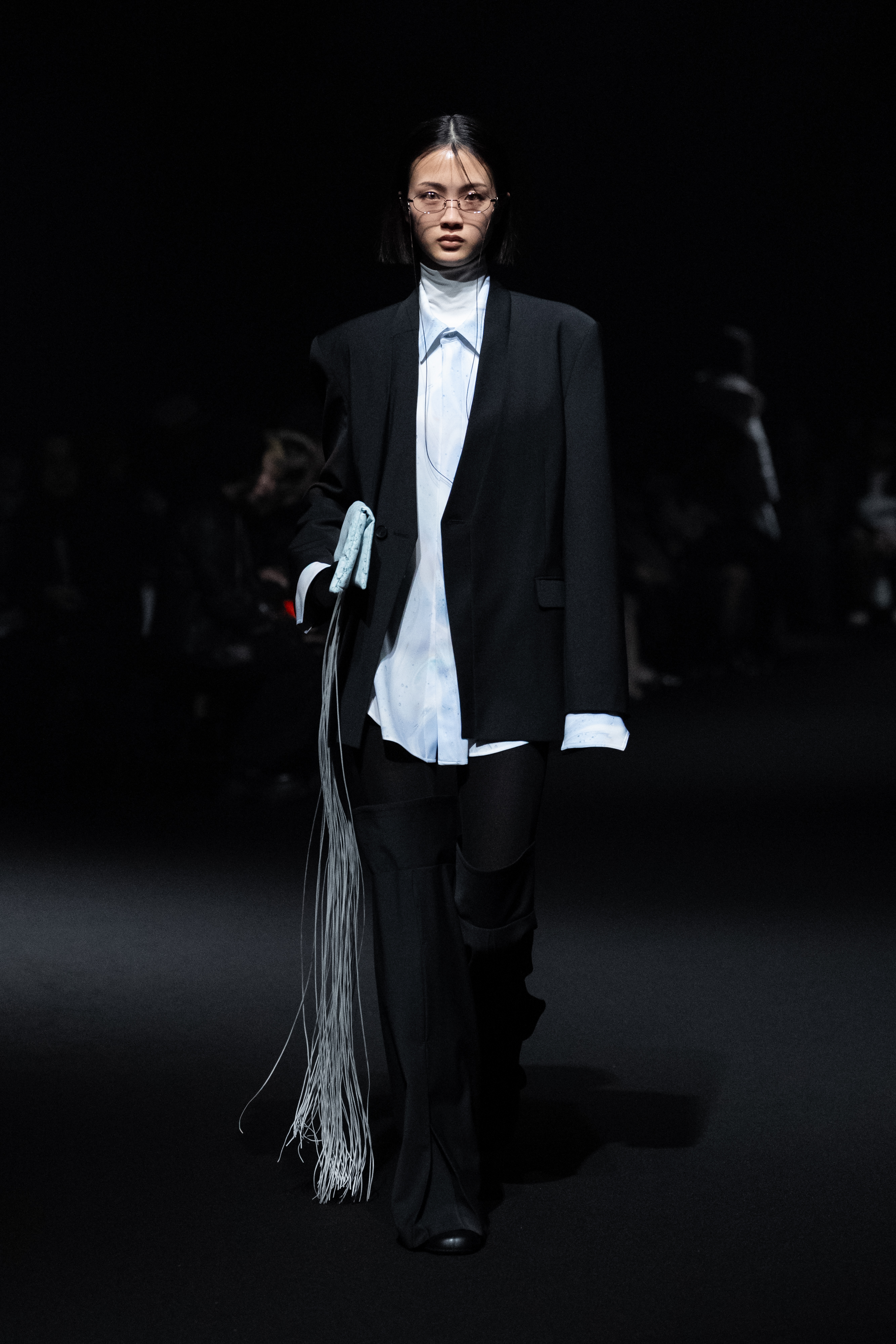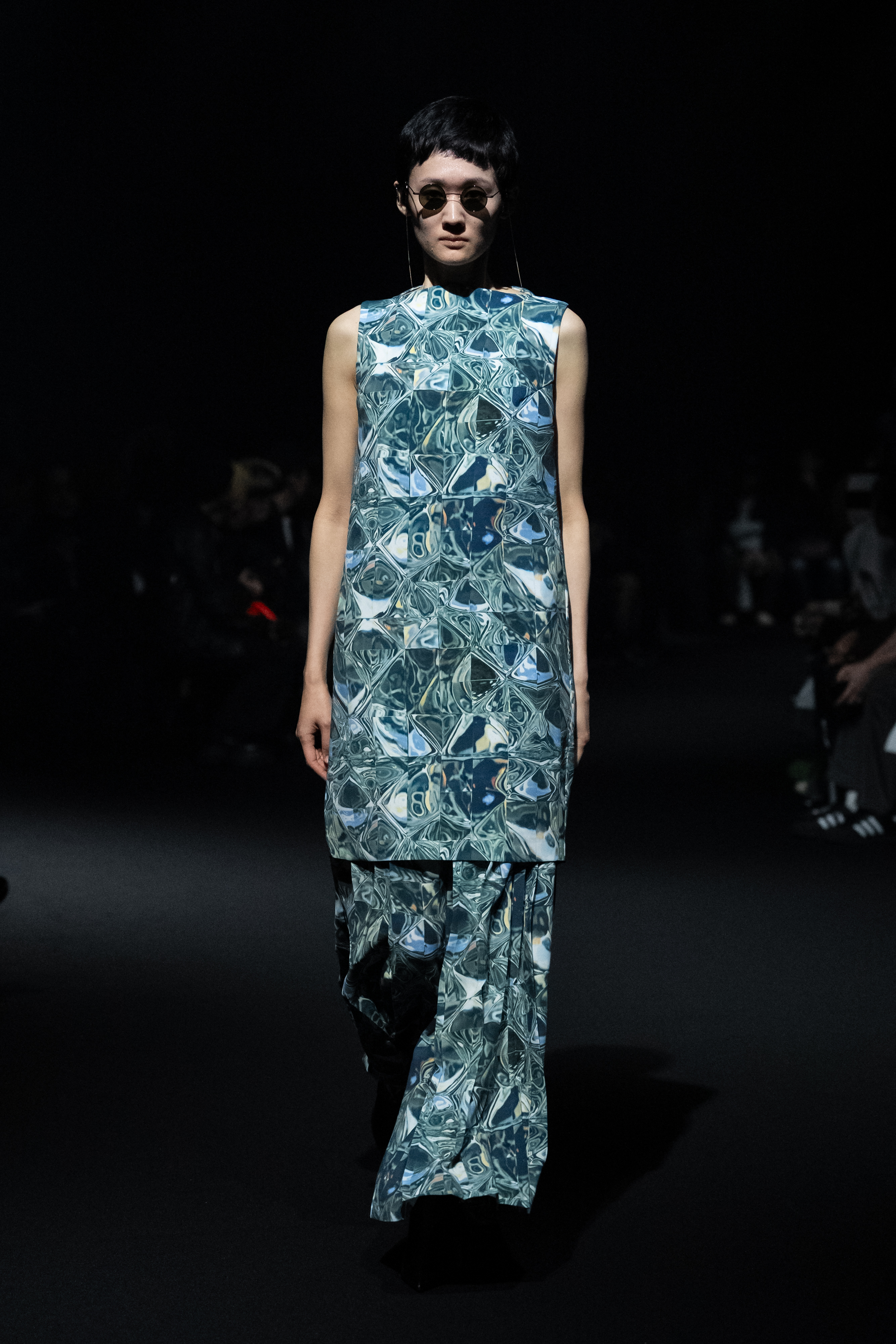Kyocera's FOREARTH Technology Powers HATRA's 2025 AW Collection at Rakuten Fashion Week TOKYO
Fabric printed by the eco-friendly inkjet textile printer “FOREARTH”, which enables printing on a wide variety of fabrics, was adopted by Mr. Keisuke Nagami, founder and designer of Japanese fashion brand “HATRA”, and was presented at Rakuten Fashion Week TOKYO 2025 AW on March 20th.
The collaboration this time was made possible by Keisuke Nagami, who actively embraces new digital technologies such as 3D cross simulation and generative AI. He recognized the innovative printing technology of FOREARTH, which allows for printing while maintaining the excellent texture of the fabric.
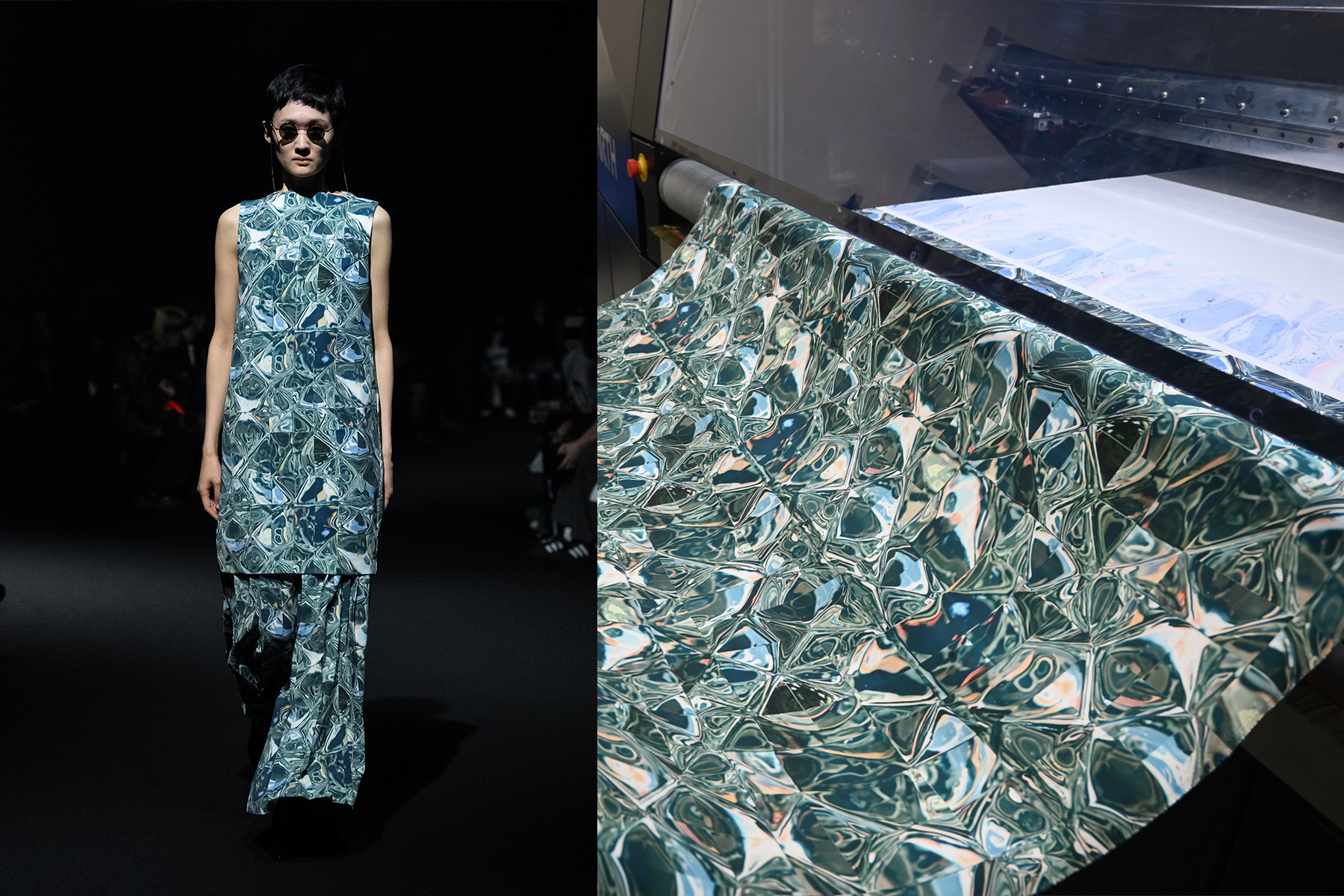
Comment from Keisuke Nagami
We are always aware that the mass production of copies based on the original clothing in any form puts a considerable burden on the environment. But why do we continue to make clothes on a small scale? I'm always asking myself questions as I continue to create.
For example, in what I think should be a prototype for the "new normal", HATRA uses digital technologies such as 3D cross simulation and generative AI to continuously search for design methods that smoothly connects the entire production process. In the past, it was necessary to devise printing techniques and data formats according to the characteristics of the fibers, but with FOREARTH, we were surprised to find that the excellent texture was maintained even for fabrics such as triacetate and cupra, which were considered difficult until now.When I saw the processed samples, I felt that it was not only about making the process, but also about lightly expanding the possibilities of design, which have been narrowing unwittingly, such as "this pattern for this fabric."
For this collection, we tried to create complex color expressions that make you feel the glitter of transparent objects such as ice and glass. To create a visual "transparency," you need to create a subtle gradient. When I saw processed samples printed by FOREARTH, I realized the high reproducibility. And the best part is that it achieves a soft texture that was difficult to achieve with pigment ink. The texture of the fabric is not lost at all, and it is finished as if it was the original color.
This time, I got very good results with recycled polyester broadcloth*, but if it is possible next time, I would like to work on the application of more expressive materials. In the future, I hope to be able to build the future of clothing manufacturing, where textiles, patterns, printed designs, and even sewing are smoothly circulated.
In addition, unlike the conventional method, a large amount of water is not used, which means that it can be installed anywhere. This not only eliminates drainage problems, but also reduces transportation costs and promotes the updating of the garment manufacturing process itself. There are a myriad of new ways to add color, and with this alone, we can see the future.
This collaboration made me realize that great innovation is about inspiring creativity, not just imposing constraints for a purpose.
*A high-density plain fabric with horizontal ridges on its surface.

<List of outfits with fabric printed by FOREARTH>
Click here for press release

